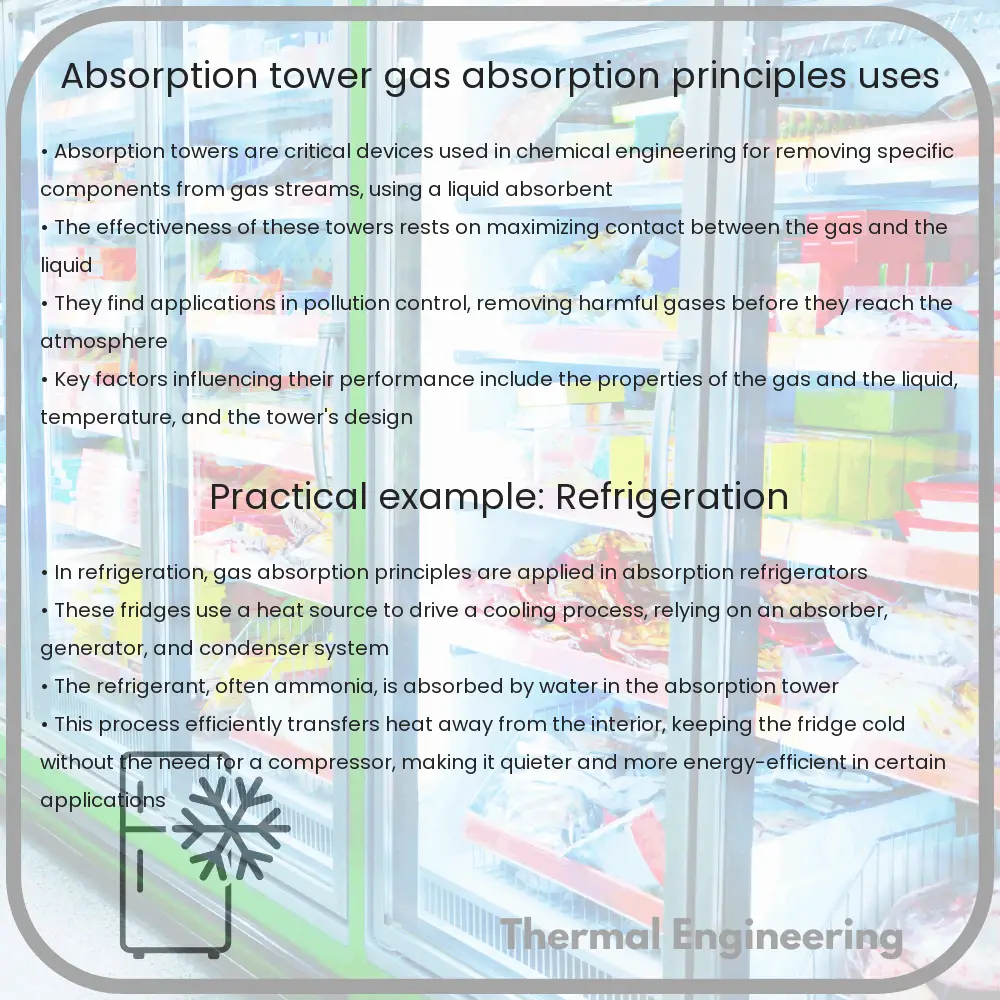Learn how absorption towers, also known as gas absorbers, function to remove pollutants from gases, aiding in compliance with environmental standards and recovery of valuable materials.

Understanding Absorption Towers: Principles and Applications
Absorption towers, also known as gas absorbers, are critical components in chemical engineering and environmental management. They are designed to remove specific components from gas streams, allowing industries to comply with air quality standards and recover valuable substances. This article delves into the core principles of gas absorption and the diverse applications of absorption towers.
Principles of Gas Absorption
Gas absorption involves transferring one or more components of a gas phase into a liquid phase. The process is driven by the concentration gradient, following Fick’s Law of Diffusion, which states that the rate of transfer of a solute from one phase to another is proportional to the concentration gradient across the phases.
The basic formula for the rate of absorption can be represented as:
R = kL a (yA – yA* )
Where:
- R is the rate of absorption,
- kL is the liquid-phase mass transfer coefficient,
- a is the specific interfacial area,
- yA is the mole fraction of the solute in the gas phase,
- yA* is the equilibrium mole fraction of the solute in the gas phase corresponding to the liquid phase concentration.
This process is commonly enhanced by the presence of packing material within the tower, which increases the surface area for mass transfer and supports a more intimate contact between the gas and the liquid.
Design and Operation
The effectiveness of an absorption tower depends on its design and operational parameters. Key factors include:
- Packing material type and size,
- Height and diameter of the tower,
- Rate of liquid and gas flow,
- Temperature and pressure conditions.
The choice of packing material – be it random or structured – impacts the pressure drop across the tower and efficiency of the process. Effective design calculations are crucial to optimize these factors and achieve the desired absorption efficiency.
Applications of Absorption Towers
Absorption towers are employed in various industries for diverse purposes, including:
- Environmental Control: Removing pollutants like sulfur dioxide (SO2) and ammonia (NH3) from industrial emissions to prevent air pollution.
- Chemical Synthesis: Recovering acids and organic solvents in chemical production processes.
- Petroleum and Natural Gas: Purifying natural gas streams by removing undesired components such as water vapor and carbon dioxide.
- Beverage Production: In the production of soft drinks and other carbonated beverages, CO2 is absorbed under pressure into the liquid to create fizziness.
Conclusion
Absorption towers are vital components of modern industrial operations, playing significant roles in environmental management and production efficiency. Understanding the basic principles and applications of these systems helps in designing more efficient and environmentally friendly processes. As industries continue to focus on sustainability, the importance of efficient and effective gas absorption systems will likely increase, driving further innovations in the field.